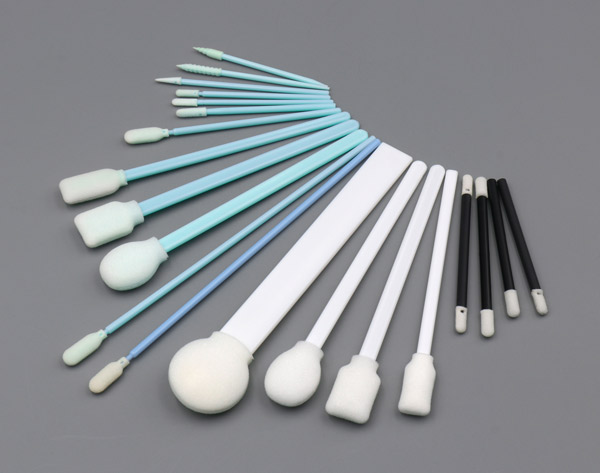Микроскопы являются важными инструментами в научных исследованиях, лаборатории, и медицинская диагностика. Поддержание их чистоты имеет решающее значение для обеспечения точных результатов и продления их продолжительности жизни. One effective tool for this task is the cleanroom foam swab. В этом сообщении блога, we’ll explore the importance of microscope cleaning, the role of cleanroom foam swabs, and how to use them for optimal results.
Why Microscope Cleaning Is Essential
Microscopes are delicate instruments that require regular maintenance to operate effectively. Пыль, масло, and other contaminants can accumulate on lenses, eyepieces, and other parts of the microscope, leading to:
- Reduced image clarity: Contaminants can distort or obscure the view under the microscope.
- Damage to optics: Abrasive particles can scratch sensitive optical surfaces.
- Shortened equipment lifespan: Accumulated dirt and improper cleaning can degrade components over time.
Regular cleaning ensures that microscopes remain in prime condition, providing clear and accurate results for years to come.
Benefits of Using Cleanroom Foam Swabs for Microscope Cleaning
Cleanroom foam swabs are specifically designed for precision cleaning in controlled environments. Here are the main benefits of using them for microscope maintenance:
1. Non-Abrasive Cleaning
Foam swabs are soft and non-abrasive, making them ideal for cleaning delicate microscope lenses and optical surfaces without scratching or damaging them.
2. Lint-Free Design
Unlike cotton swabs or traditional cleaning tools, cleanroom foam swabs are lint-free. This ensures no fibers are left behind, which could interfere with the microscope’s functionality.
3. Химическая совместимость
Foam swabs are compatible with a wide range of cleaning agents, such as isopropyl alcohol and lens cleaning solutions, allowing for effective removal of oils, пятна, и другие загрязнения.
4. Прецизионная очистка
The small, ergonomic design of foam swabs allows for precise cleaning of hard-to-reach areas, such as the edges of lenses and microscope crevices.

Optimized Usage Guidelines for Cleanroom Foam Swabs
To ensure optimal performance when using cleanroom foam swabs for microscope cleaning, it’s essential to adhere to the following best practices:
1. Swab Preparation
- Store foam swabs in a dust-free, clean environment to maintain their integrity.
- Avoid direct contact with the swab’s tip to prevent contamination.
2. Choosing the Right Cleaning Agent
- Select a solvent that is compatible with both the foam material and microscope components.
- Opt for a residue-free, quick-evaporating cleaning agent to avoid leaving streaks or moisture behind.
3. Applying the Solution
- Lightly moisten the foam tip with the cleaning agent—avoid oversaturation, as excess liquid can damage sensitive microscope parts.
4. Gentle Cleaning Technique
- Clean surfaces using a gentle circular or back-and-forth motion.
- Apply minimal pressure to effectively remove contaminants without risking damage to delicate components.
5. Proper Disposal
- Discard the swab after a single use to eliminate the risk of cross-contamination.
- Always use a fresh swab for each cleaning session to ensure maximum cleanliness and hygiene.
Заключение
Cleanroom foam swabs are an indispensable tool for maintaining microscopes and ensuring their optimal performance. By following proper cleaning techniques and using high-quality swabs, you can preserve the precision and longevity of your equipment.
 Пенные тампоны для чистых помещений, полиэфирные тампоны, Производитель комплектов для чистки принтера – Медитек
Пенные тампоны для чистых помещений, полиэфирные тампоны, Производитель комплектов для чистки принтера – Медитек